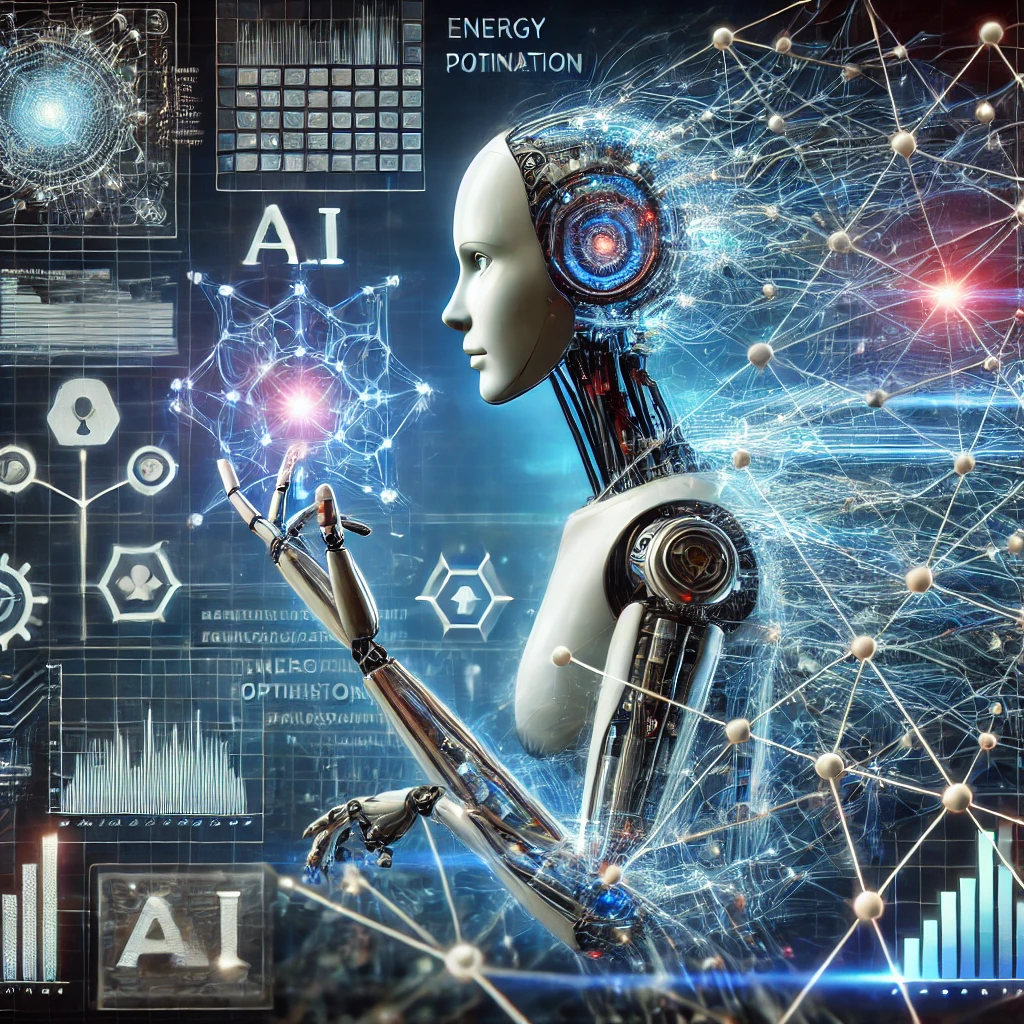This post is inspired from the Talk by Yann LeCun's presentation, "The Shape of AI to Come! Yann LeCun at AI Action Summit 2025.”
In today's AI landscape, Large Language Models (LLMs) dominate many applications—from chatbots to recommendation engines. However, as leading experts have argued, these generative models often fall short when it comes to deep reasoning, common-sense understanding, and planning. This has spurred the exploration of AI Agentic Workflows, where systems are designed to act as autonomous agents capable of structured reasoning, task decomposition, and dynamic optimization.
In this post, we’ll explore how Joint Embedding Predictive Architectures (JEPAs), Hierarchical Planning, and Energy-Based Models (EBMs) can be combined to create robust AI agents. We’ll dive deep into the technical approach and then discuss practical use cases such as smart home assistants, healthcare advisory systems, financial planning, autonomous robotics, and customer service chatbots.
Rethinking AI: The Need for Agentic Workflows
LLMs have achieved impressive feats, from generating human-like text to performing complex tasks. Yet, these models often:
Struggle with multi-step reasoning: Sequential token generation can lead to error accumulation, making complex planning difficult.
Lack real-world understanding: Training primarily on text, they miss out on the rich, multi-sensory data that humans use to form mental models.
Suffer from hallucinations: Early mistakes in generation can cascade, causing outputs to drift away from intended meaning.
AI Agentic Workflows address these challenges by decomposing tasks into structured sub-tasks, using learned world models, and dynamically optimizing responses with energy-based approaches. This design not only reduces reliance on massive LLM calls but also mitigates issues like hallucinations.
The Technical Deep Dive
1. Joint Embedding Predictive Architectures (JEPAs)
What Are JEPAs?
Unlike generative models that predict outputs in raw data space (e.g., pixel-by-pixel in video), JEPAs work by:
Encoding inputs and outputs into a shared embedding space.
Predicting structured representations rather than raw data.
Eliminating unpredictable components from the prediction task.
Benefits:
Noise Reduction: Abstracting away irrelevant details allows the model to focus on capturing essential features.
Generalization: Joint embeddings enable robust matching between user inputs and potential outputs.
Efficiency: Predicting in the latent space is computationally lighter than generating high-dimensional data directly.
2. Hierarchical Planning
Breaking Down Complex Tasks
Many tasks—whether managing smart environments, diagnosing medical conditions, or planning financial strategies—are inherently multi-step. Hierarchical planning involves:
Task Decomposition: Breaking a complex problem into smaller, manageable sub-tasks.
Contextual Feedback: Using a world model to update context as each sub-task is completed.
Sequential Decision Making: Planning over multiple steps ensures that early decisions set the stage for later actions.
Benefits:
Structured Reasoning: It helps the system systematically tackle multi-step processes.
Adaptability: Dynamic recomposition of tasks allows the agent to respond effectively to new information.
Efficiency: By avoiding a monolithic approach, errors in one stage are less likely to derail the entire process.
3. Energy-Based Models (EBMs)
Optimizing with an Energy Function
Energy-Based Models offer an alternative approach to predictions. Instead of generating outputs solely based on probability distributions, EBMs:
Define an energy function: Lower energy scores indicate more optimal or “compatible” outputs.
Optimize outputs dynamically: Candidate plans or responses are refined to minimize energy, ensuring that constraints and objectives are met.
Benefits:
Error Correction: The EBM can refine suboptimal predictions before the final output.
Constraint Satisfaction: Particularly useful in domains where multiple constraints (e.g., cost, efficiency, safety) must be balanced.
Safety and Control: Well-designed energy functions help ensure that outputs meet critical safety and performance standards.
Practical Use Cases
These advanced techniques can be applied across a variety of domains. Here are several practical use cases:
1. Smart Home Assistants
Imagine an AI managing your smart home environment:
Task: Coordinate lighting, heating, and security based on user habits and sensor data.
Approach:
JEPA encodes user commands and environmental data into a shared latent space to capture nuanced preferences.
Hierarchical Planning breaks down tasks (e.g., adjusting lighting → setting temperature → activating security).
EBM scores potential action sequences based on criteria like comfort, energy efficiency, and safety to ensure the optimal home environment.
2. Healthcare Advisory Systems
Accurate and personalized healthcare advice is critical:
Task: Assist clinicians in diagnosing conditions or recommending treatment plans.
Approach:
JEPA embeds patient data (symptoms, medical history) alongside clinical knowledge.
Hierarchical Planning decomposes the diagnostic process into tests, observations, and follow-up actions.
EBM refines treatment recommendations by balancing factors such as patient safety, efficacy, and cost.
3. Financial Planning and Advisory
Balancing risk, return, and individual preferences is key in financial planning:
Task: Develop personalized investment strategies or retirement plans.
Approach:
JEPA maps user financial goals and market data into a joint embedding space, capturing risk profiles and trends.
Hierarchical Planning decomposes the planning process into stages (e.g., short-term savings, long-term investments, contingency planning).
EBM evaluates and optimizes investment portfolios based on risk metrics, ensuring that recommendations align with user objectives while mitigating risks.
4. Autonomous Robotics
In robotics, planning and adaptability are paramount:
Task: Navigate complex environments, manipulate objects, or perform assembly tasks.
Approach:
JEPA enables robots to learn embeddings of sensory inputs (vision, touch) and actions.
Hierarchical Planning allows robots to break down tasks into motion primitives (e.g., grasping, lifting, placing).
EBM optimizes action sequences in real time based on environmental feedback, ensuring smooth and safe operation.
5. Customer Service Chatbots
Context-aware and reliable customer support is essential:
Task: Provide accurate, context-sensitive assistance in domains like banking or technical support.
Approach:
JEPA embeds user queries alongside historical interactions to maintain context.
Hierarchical Planning structures conversations, guiding the chatbot through steps like problem identification, troubleshooting, and resolution.
EBM filters and refines responses to ensure consistency and relevance, reducing the risk of errors or hallucinations.
Integrating These Components into AI Agentic Workflows
Architectural Overview
The following high-level architecture integrates these components into a cohesive AI agent:
Input Processing:
JEPA Encoder: Receives and encodes user input into a latent space.
Task Decomposition:
Hierarchical Planner: Decomposes the input into a sequence of sub-tasks and generates a candidate plan.
Plan Optimization:
Energy-Based Model: Evaluates and refines the candidate plan by optimizing the energy score, ensuring it meets all constraints and objectives.
Output Delivery:
Response Filter: Checks the optimized plan against defined thresholds before delivering it as the final output, potentially minimizing calls to heavy LLMs.
Example Code Sketch
Below is a simplified Python code snippet demonstrating how these components might interact:
1import numpy as np 2This code illustrates the high-level flow: user input → JEPA encoding → hierarchical task planning → energy-based evaluation and optimization → final output.
Challenges and Future Directions
While this approach is promising, several challenges remain:
Training Complexity: Developing and training JEPA models requires large-scale, multi-modal data.
Optimization Overhead: Energy-based optimization might introduce latency if not properly streamlined.
System Integration: Merging these components with existing LLM-based systems may require hybrid architectures.
Future research could explore:
Improved Energy Functions: Designing energy functions that better capture multi-objective constraints.
Hybrid Architectures: Combining agentic workflows with reinforcement learning for real-time adaptability.
Scalability: Optimizing the pipeline for efficient operation at scale.
Conclusion
Incorporating JEPA, Hierarchical Planning, and Energy-Based Models into AI Agentic Workflows represents a significant shift from traditional generative approaches. By decomposing complex tasks, embedding inputs and outputs in shared spaces, and dynamically optimizing responses, AI agents can achieve deeper understanding and more robust performance across diverse applications.
From smart home assistants and healthcare advisory systems to financial planning, autonomous robotics, and customer service chatbots, the potential of these techniques spans multiple domains. As we continue to push the boundaries of what AI can achieve, agentic workflows offer a promising pathway toward systems that are not only intelligent but also adaptable, safe, and truly useful.
Have you experimented with agentic workflows in your domain? Let us know in the comments below!


Comments